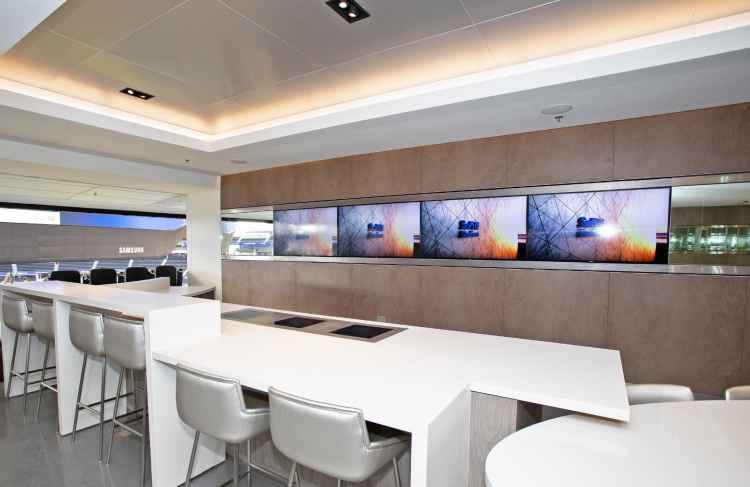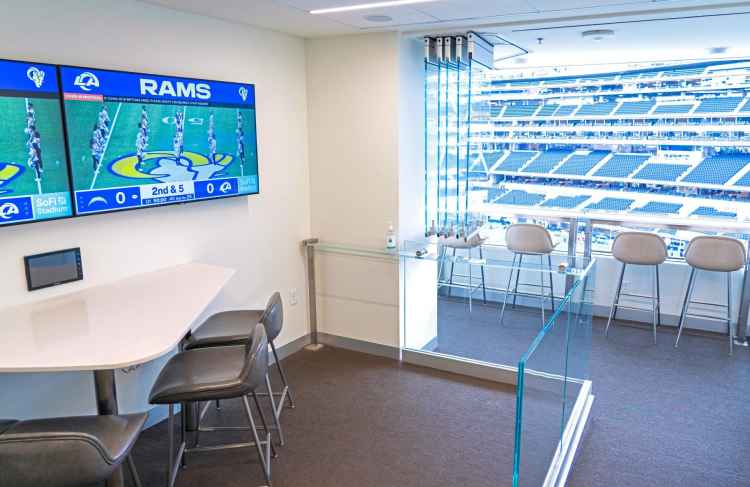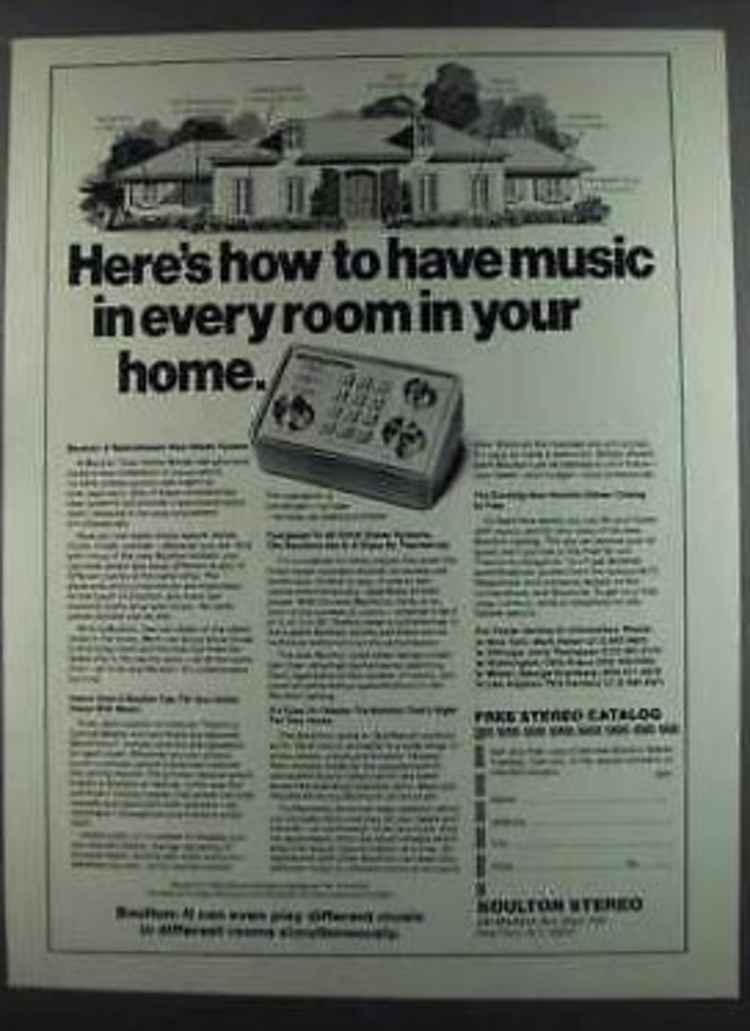This quarter’s ‘Letter from America’ looks at how distributed video and audio has changed and its different solutions. Michael Heiss explains.
While many of us might think of distributed audio/video as a reasonably recent technology concept, driven by the residential technology business, it is almost as old as the voice, recorded music, video and data content it carries. Remember those old telephone switchboards where the operator connected calls with line cords into ¼” jacks? That’s control of distributed audio. Have you ever changed the channel using a satellite or cable box connected to the rooms in the house via either star or home run connections? That’s also control of distributed AV, and it, too, has been around for many decades. When we talk about distributed AV, we think we’re futuristic, but we are doing the same thing, just perhaps in different ways and with different pipes and kit at both ends of the “line”.
Indeed, as a young lad I used to marvel at ads for their distributed, multiroom systems that a company called Boulton Audio used to run in the Sunday Magazine of the New York Times. Even all those decades ago, their bespoke-finished control panels oozed elegance combined with flexibility and audio quality. Seeing them is actually one of the things that led me to think about being part of this industry. The first job I had out of graduate school was with a company that created the first in-room hotel movie service. Talk about distributed V/A systems? Our crews installed home run RF cables to every room in hotels built in the mid-1930s when the walls were really solid and thick, with up to 3,400 rooms. Technology at the time was a huge routing switch and the guests had to call down to a desk for us to control the feed which they selected with a small set top RF switch. You get the idea.
Moving forward, the distributed V/A business for modern residential systems started out sort of the same way: home run wires, albeit with a digital system and in-suite keypad to select the content. After all, the content from a rack of players, receivers or set top boxes fed to a big funnel in a rack somewhere in the home. At the bottom of the funnel only one stream was fed out to a room at any time. Heaven help you if too many rooms wanted to watch different programmes at the same time. Primitive, perhaps, by 21st century technology’s standards, but it worked.

Sometimes we are too accustomed to touchscreen control for distributed V/A. Imagine my surprise when I realised that the flat panels in this SoFi Stadium Terrace Suite were induction hobs! The actual Crestron panel was in a back corner. Image: LA Rams
My, how the technology behind distributed V/A has changed! One contemporary scheme is for the content to be sent via IP. That gives the system more than enough bandwidth to distribute almost any content, from the highest resolution audio to 4K, and perhaps even 8K, video. However, you must still have a receiver or source devices and connections to deliver any of the almost uncountable possible sources. A great expression of technology, but I offer than it may beg the key question here: “Is distributed video/audio still a ‘thing’?” Perhaps, but perhaps not.
“When thinking about audio, perhaps the remaining true “rack device” stored content repository, our old notion of distributed audio may still remain.”
To be certain, there are quite a few applications where the distribution scheme is “many to many”, rather than the typical “one to one” where a source is connected to a single sink device. This is particularly common in the education, industrial and enterprise markets. Another common place you encounter this is in security applications where one needs to quickly select a camera, audio or other source and then feed it to one or more end points. In the old days we used to call these devices “routing switchers”, but today they are known as matrix switches. They used to be baseband, later RF, and are now typically distributed IP in some format (e.g., SMPTE ST-2110 or similar) either natively as IP or a “HDMI over IP”.
However, today’s residential market is a different world. Think about it: does a traditional “many to many” solution for moving of multiple content sources from a single location and then selecting the desired choice at the end point really make sense anymore? Perhaps, one suspects in a smaller range of applications than in years gone by. Yes, the “grand mansion” and “ultra-luxury” markets still consume a fair amount of keypad and bespoke remote control. However, with the most recent CEDIA Integrated Home Market Analysis (albeit for the US market, but one suspects that the global market tracks similarly), the average project size is $26,000 (£19,795/€23,830). That is about the same as five years ago and is actually $5,000 less than ten years ago. That tells us that there may be fewer mega-sized distributed V/A systems than you might think.

In some situations where the user is not familiar with the control system, such as this suite at LA’s SoFi stadium, traditional distributed V/A and a touchscreen may still be the wisest choice. Image: LA Rams
What, then, is the present and future of distributed video/audio? How do you make certain that your clients get the proper content delivered to each room with the best quality at the most reasonable cost-value to them and both profit and efficient job site work for you? The first and simplest answer is that there is no easy, “one size fits all” solution. It requires a mix of hardware and software that will vary from one project to the next.
Let’s start with what is the content mix, be it video, audio or a mix of both, and where is it coming from before it is “distributed”. These days the notion of a “mix” is most operative. Is there any traditional, RF-delivered, over-the-air (OTA) product in the mix? If so, they don’t need a separate distributed V/A system, as the RF backbone does that. After all, the broadcast pipe already has all the sources, you port that over coax and the tuner in the sink device does the rest. Nothing fancy about that.
However, we are increasingly living in a cloud-based world. There, in most cases you don’t have to provision the reception or storage of the various content streams, except perhaps where there is some local video or audio content server. OK, the servers for that may be a few rack units high, but nothing as large as the racks and racks of satellite or cable STBs you’d encounter in a sports bar or large residential job. Mash it all on to the (hopefully) high bandwidth IP infrastructure and you’re good to go as the consolidated feed goes everywhere the wired IP backbone, Wi-Fi, or now perhaps even 5G is available.
Well, not quite. It’s easy enough to send the streams from here to there, but think back to the first example here. The old Boulton systems selected sources with a telephone dial. Later, Creston, AMX, C4 and the like did it with buttons, keypads and then touchscreens. Control is the key, and it always has been.

Forty years ago, before the residential technology business as we know it was a reality, this was the height of bespoke distributed audio.
Fortunately, the same advances that reduce the need for racks of source devices and dedicated control wiring have brought app control and what I’d like to call “edge distributed AV”. In other words, just as “edge computing” places data and some processing closer to the user, that is, in essence, what the best solution may be today. The “edge AV” is your smart TV, connected streaming box/dongle or a smart speaker. As mentioned in our last print issue, you may need more than one device, depending on the specific services desired as one-size-fits-all may not apply here. That shouldn’t be a problem, however, as any of these devices you will use will have its own control app.
Now, all you need to do is control it. Simple…or at least not difficult. For video/audio content services simply load the needed apps and aggregate them into a single widget on a smartphone or tablet. Remind the user where that widget is, and what app to use for what source. There was a time when that might be a problematic bit of consumer learning, but clearly not anymore. The biggest hurdle may simply be to have the user reach for the phone, not the remote they have always been used to, for content selection and control.
Even better, with voice control it gets even easier. Many smart TVs and virtually all current streaming products have Alexa, Google Assistant or Siri/HomeKit control. Where you add value to the equation is in making certain that every device is compatible with the desired control system. You can, or should be able to, do that in your sleep. Many consumers can’t and that is why what you do remains a great value proposition for the client.
“That tells us that there may be fewer mega-sized distributed V/A systems than you might think.”
As always, there are some pitfalls to avoid in this new world of cloud/edge sourced, distributed, and controlled content ecosystems. Check to see if the controlled devices are “works with” or “native”. That’s a fancy way of checking to see if the device being controlled has onboard mics (think Alexa, Google or HomePod products), mics embedded into a remote (think Roku devices, FireTV or Chromecast dongles), or devices that respond, but can’t “listen” though their own mics simply because they don’t have them (think some smart TVs). None of this is a problem, as long as you get the device mix right and train the user properly. This makes a difference as to whether or not the voice command will be “Play content desired” or “Tell device name to play content desired from content service”.
When thinking about audio, perhaps the remaining true “rack device” stored content repository, our old notion of distributed audio may still remain. Sometimes a sink device is able to handle that, but not always. For that, device compatibility permitting, something such as Roon might do the trick. Or, to prove that distributed audio is not like the parrot in an old Monty Python sketch, another alternative for the sink device is a pair of smart speakers, configured for stereo. There, the voice control is easy, the sound is good and little end user training is needed.
As an example of how this might work, let’s conjure up an admittedly non-residential application. Picture a row of treadmills or exercise bikes at the health club. Yes, you can have one large screen for every few machines, but then everyone has to agree on the programme. Alternatively, in an old fashioned distributed system you would run coax to a set in front of each position and then make certain that each has its own remote and that there are enough source devices to accommodate the varied programme requirements.
Not anymore. As long as there is sufficient bandwidth, what if each exercise device has its own Wi-Fi connected streamer. Then the user simply picks what they want and uses a wired connection for headphones from the TV or provision a Bluetooth transmitter to the TV so that each gym rat may use their own headphones. Even better, put a QR code on each piece of equipment for the streamers’ app and let the user choose the content with their phone and listen through the same ear buds they already have. Other than the Wi-Fi and power for the streamer, no complex routing, no room or closet with racks full of source devices or distributed AV routing system needed.
Now, take that example and scale it down (or if needed, up) to residential size and you get the moral of the story here. No, at the end of the day it isn’t distributed V/A that is obsolete, it may be the way we think of doing it. The need is there but the solution may have changed. To be sure, there will always be situations where conventional distributed audio, particularly when integrated with other systems such as HVAC and lighting point to a traditional touchscreen system, particularly in ultra-luxury installations.
A good example of that is the SoFi Stadium here in Los Angeles, home of this year’s Super Bowl back in February. I had the opportunity to tour it recently and each of the 260 luxury suites has multiple screens and speakers but not a remote in site. Control was a traditional Crestron touchscreen, albeit hidden in an odd location over in a back corner area. Silly me: there were two elegant glass panels in the middle of a counter island in the middle of the suite. I thought that THEY were the control surfaces but, oops!, they were the induction cook tops! Talk about “hot programme content”!
So, the question remains: “Is distributed video/audio dead?”, or as the shopkeeper tried to convince the beleaguered customer about the parrot in a great Monty Python sketch, “Only sleeping!”. The answer is mixed. No, it certainly isn’t dead, but it has changed. The trick is to keep up with the many different alternatives as to how it is done. Find the way that meets the clients’ needs and budget. Then find the best way to do it efficiently and with kit that is easily upgraded or replaced when needed. After all, as long as buildings have more than one room, and people want different content in each of them, there will always be some form of distributed content system.
The trick is to keep up with the times and, as the title of this article says, you need to different, but perhaps distribute differently.
Main image: Properly configured, a pair of Nest Audio speakers, Amazon Echo devices or Apple HomePod Minis can deliver distributed audio from streaming services or anything else you point to it from the likes of Apple AirPlay, ChromeCast or similar. Image: Google Nest





More Stories
Powering Business Resilience: How Expert Technical Support Transforms Modern Enterprises
The Challenges of Modern Data Ecosystems Most Startups Don’t Envisage
Level Up Instantly: The Fastest Way to Buy Free Fire Diamonds in 2025